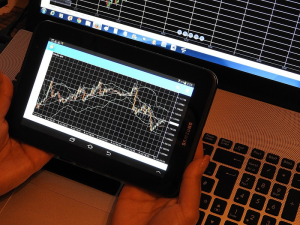2020 has been an extremely volatile year so far in terms of the global financial markets. It was noted by The Guardian that 29 years of economic growth in Australia had stalled, with over one million people losing their jobs, and the GDP shrinking by 0.3% in the first quarter alone.
2020 has been an extremely volatile year so far in terms of the global financial markets. It was noted by The Guardian that 29 years of economic growth in Australia had stalled, with over one million people losing their jobs, and the GDP shrinking by 0.3% in the first quarter alone.

Source: Pixabay
What Happened in Q1 2020?
The lockdown in Australia began in mid-March, with the Australian Grand Prix one of the first major events to be cancelled due to these restrictions. Since this occurred at the end of the first quarter, the overall effect on the economy wasn’t as great in the first three months of 2020 as in the following three.
The foreign currencies market has been more volatile than usual, as each nation around the world has seen its economy hit at different times and in varying ways. One of the most immediate effects at the end of Q1 was the strengthening of the US Dollar, as investors used it as a safe haven.
Thanks to this volatility, many investors have profited from the sharp price movements. To move quickly and accurately, it has proved crucial for people who trade forex Australia to use a reliable platform that gives access to all of the figures and charts that are needed to make moves in an ever-changing market.
The Australian Dollar plunged against the USD, from $0.67 at the start of March to a 17-year low of $0.58 a couple of weeks later. Against other major currencies the chart has been steadier, as the likes the UK and the Eurozone have gone through a similar crisis to Australia. One exception is New Zealand, whose Dollar stayed strong thanks to the country’s effective response to the economic crisis.
In terms of the stock market, the ASX 200 plunged at around the same time as the AUD, with March 23 marking a low point of just over 4,500. Naturally, not all industries were equally affected.
Travel and tourism were among the hardest hit sectors, as restrictions on movement led to demand for their services slumping. Some retail and entertainment stocks held up well, as those companies that offer online services or home delivery saw an increase in demand.
How Did the Markets Change in Q2 2020?
In the forex world, the second quarter has seen a dramatic recovery that has taken it back to around the pre-lockdown level. Increased investor confidence that the worst is over has seen the USD fall back against the AUD and most other currencies.
As for ASX 200 in the second quarter, the recovery has been slower than in the currency market but, at the time of writing, it is again within touching distance of 6,000.
It is worth noting that the big banks have led this drive back up the charts. This appears to be on the basis that the lasting financial damage caused by the current crisis won’t be as severe as was feared at the end of Q1.
With the travel industry getting ready to bounce back with increased flights in June and July, stock in these companies is also starting to show signs of recovery. For example, Qantas suffered a dizzying drop in mid-March but has been gradually climbing back towards its pre-lockdown price.

Source: Pixabay
A Look Ahead
The financial markets are likely to remain volatile for the rest of 2020, as many diverse factors are at play. However, the signs are that the worst effects of the lockdown are over, and that the remainder of the year should see a return to something closer to normal trading conditions.







